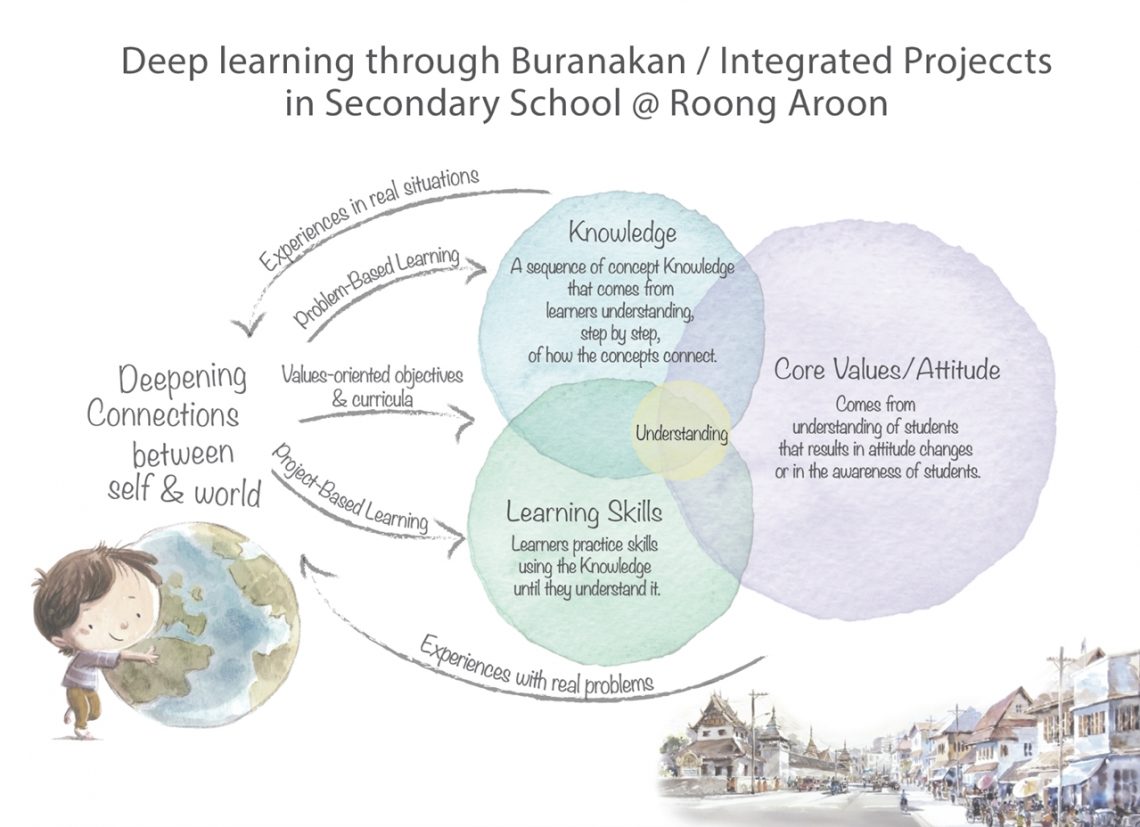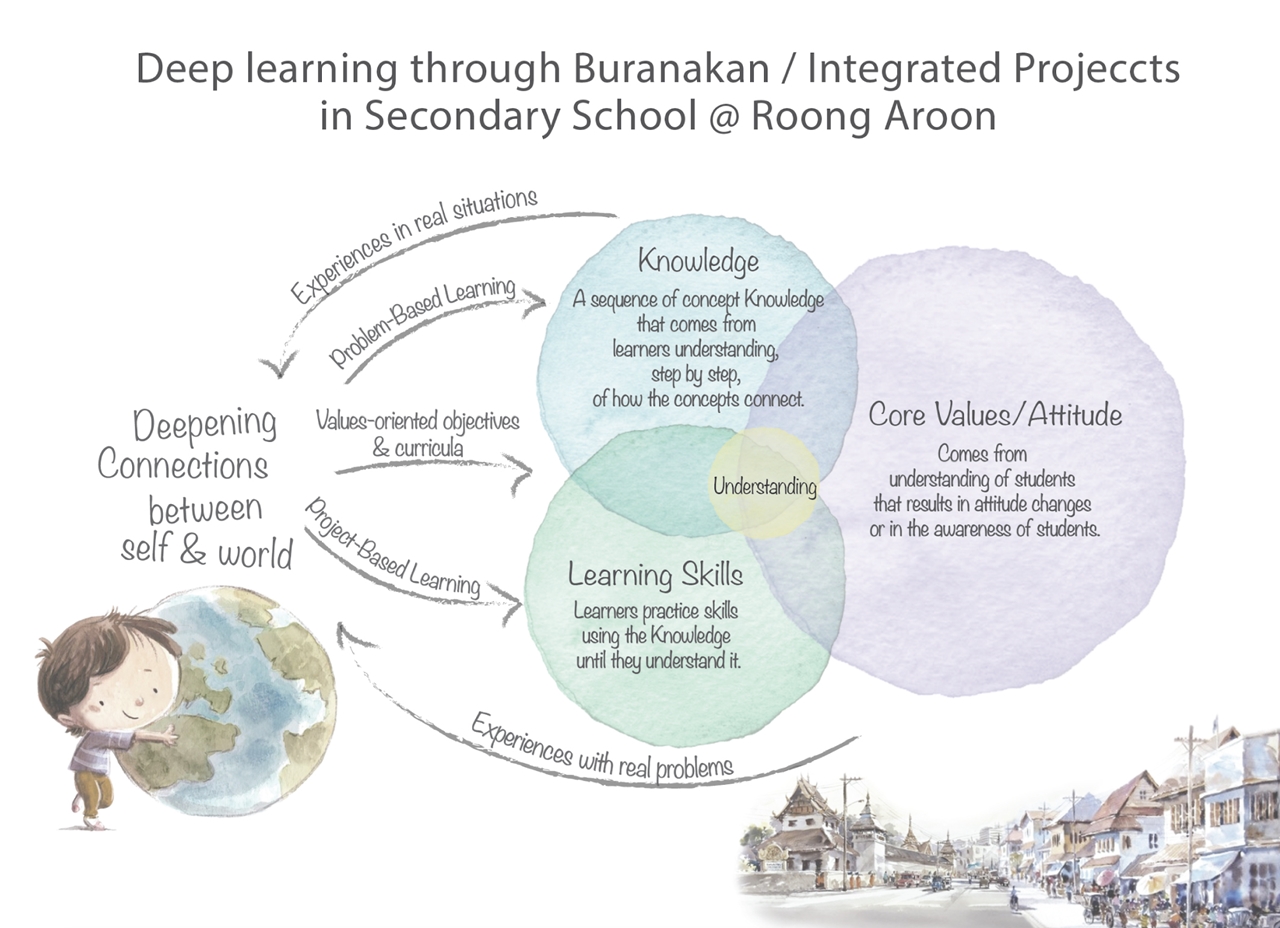
Buranakan in Grade 9: Deep Learning through Integrated Project Work
Designing Buranakan
Buranakan means “integrated” in Thai (pronounced as “boo-ra-na-gan”). It is integrated with real life problems by connecting students with local people and place-based issues in their own lives, so that students can realize how the good things that people do around their country affect their own lives.
From its beginning in 1997, Roong Aroon’s Buranakan curricula has been rooted in how teachers learn to design lessons around core values with both knowledge and skill objectives that lead students into learning processes for developing themselves and for sharing their discoveries with the wider community.
Over the past decade, Buranakan has become more interdisciplinary as well. Students learn across social studies, the Thai language, information technology, math and the sciences. Throughout a student’s years at Roong Aroon School, the Buranakan curricula advance from kindergarten through Grade 12, according to their developmental stages.
Teachers facilitate Buranakan by guiding students to inquire into the central topic (a theme, or core concept) of living together or confronting real problems in real situations relevant to the students’ own lives. As students come to understand the synergistic elements of real problems, they seek the necessary knowledge and/or develop skills to solve the problems. In Grade 9, each student may focus on different objectives for themselves. For example, one student may focus on listening or speaking skills, while others dig more deeply into understanding societal issues or scientific facts needed to connect the project with improving their community or environment. Moreover, as a student shares their perspective with the class, it helps the other students learn too.

The “spark of inspiration” that may be easier to identify in the primary years becomes increasingly complex as students grow older. As they notice a deepening connection between themselves and their community, motivation for pursuing new projects can become interlinked with their own growing knowledge, skills, and/or values. With respect to “learning from the inside” (such as for self directed learning and self actualization), the school’s founder Prapapat Niyom explains that:
…Roong Aroon School (RAS) has put much effort to study and understand how to nurture the wise aspect of learning from within the children’s hearts. RAS has long recognized the benefits of contemplative and self-directed learning methods that can help promote a value-laden learning process to achieve the school’s main goal, the well-rounded development of students. (2018, p. 9)
At RAS, Buranakan teachers learn in relationship to mentor teachers, then develop further by their own observations and experience along with collaborative professional learning meetings with their grade-level teams. As they facilitate term-long projects, they are helping students to organize and share knowledge in ways that allow students to develop their skills while discovering for themselves the value and purpose of their learning. It is a type of self-directed learning designed to facilitate what psychologist Carl Rogers called “self-actualization” (Rogers & Freiberg, 1994). For supporting self-actualization, the importance of outer factors are also considered, such as personnel, time, space, and materials, to enhance opportunities that support the students’ eagerness to learn (Niyom, 2018).

